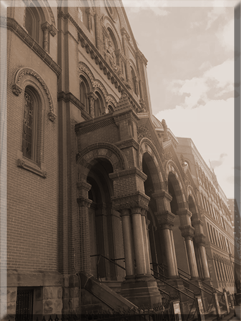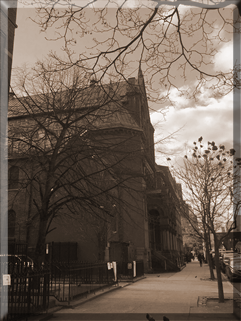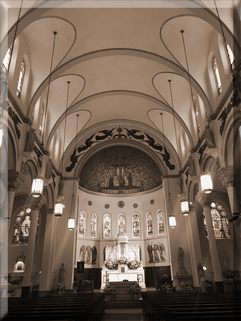About 10 years after the end of the Civil War, when construction of the Brooklyn Bridge was in its seventh year and the “panic of 1873” was plaguing New York City, the Very Reverend Hugh Flattery, a pioneer priest, established a tiny chapel in the Old Red House, a resort hotel located on 105th Street in East Harlem.
Interestingly, Fr. Flattery’s chapel—which represents the origin of the Catholic Church of St. Cecilia—was established less than two centuries after the cornerstone had been laid for the first permanent Roman Catholic Church in New York City, in Lower Manhattan.
As the founding pastor of St. Cecilia, Fr. Flattery soon began looking for a larger, more permanent parish site, but he died in 1879. His successor, the Very Reverend Monsignor William P. Flannelly, took up his cause, eventually locating and procuring property at the church’s present site on the south side of 106th Street between Lexington and Park Avenues.
Records show that the cornerstone of the new church was laid at 4 p.m. on September 9, 1883, though it is not made clear why the name of St. Cecilia—who had been martyred as a young virgin in the 2nd Century A.D., and who serves as the patroness of church music and musicians—was selected. Six months later, on the fourth Sunday of Epiphany 1884, the Most Reverend Archbishop Hayes blessed the basement chapel of what would become the new edifice.
That same year, Reverend Michael J. Phelan, famed throughout the Archdiocese of New York as the “builder of churches,” was appointed pastor of St. Cecilia, a post he held for 38 years, until 1922.
Fr. Phelan, using the building plans of Napoleon Le Brun, notable for designing the Metropolitan Life Building in New York, took on the duties of general contractor himself, commissioning the services of carpenters, plasterers, tinsmiths, and bricklayers—mostly parishioners.
By the beginning of the 20th Century, the area between Central Park’s northeastern perimeter and the Hell Gate section of New York’s East River was being populated by new waves of immigrants as Irish and Italian families joined the already established German and Jewish populations.
Later, Hispanic immigrants joined a black population in East Harlem, along with Puerto Rican families, who gave the new name, El Barrio, to the neighborhood of approximately 60 square blocks, stretching from East 100th Street to East 112th Street, and from First Avenue to Fifth Avenue.
(In what year, or at least in what decade was Commander Shea School established at 132 East 111th Street for first through fourth grades; St. Cecilia School established at 220 East 106th Street for fifth through eighth grades; and Christo Rey Catholic High School established?)
In an historical note, Commander Shea School continues to house the altar that was used by Pope Paul VI during his trip to the United States when he said his famous Mass in Yankee Stadium. The altar was bequeathed to the school in March 1972 by Cardinal Cooke.
Now well into the 21st Century, the Church of St. Cecilia, notable for bearing its “cross-crowned steeple,” continues to welcome a diversity of Catholic families representing many homelands.







